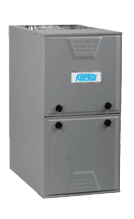The location of important pieces of equipment like the furnace is one thing that many homeowners need to be made aware of when it comes to their HVAC system. You can only do standard furnace maintenance procedures like inspecting the furnace air filter if you know where the furnace is.
This and other straightforward tasks can improve the energy effectiveness of your furnace. It will also aid in reducing the possibility of damage or failure. Continue reading to find out more details about replacing furnace filters.
The Location of Your Furnace
Most furnaces are situated in the middle of your house, either in a dedicated utility room or in the basement. If your house doesn’t have a basement, it can also be up in the attic or crawl space.
Other items like your water heater or washing machine can be nearby. Locating the furnace filter comes next after discovering where your furnace is.
The Location of Your Furnace Filter
The blower compartment is where you’ll typically find the air filter. This is accessible through a metal door or hatch on the lower side of the furnace.
It might also be on a rack mounted on the side of the furnace or in a sliding compartment close to the air handler element of your furnace. It will be put in a place where it may collect airborne debris like dust, pollen, and other things in the air your HVAC system circulates.
The furnace filter gathers more and more debris over time. It will eventually limit airflow, which might impact the overall efficiency of your HVAC system and the interior air quality of your home.
You can keep everything running more efficiently by routinely cleaning or changing the filter.
How Can the Furnace Air Filter Be Replaced?
Changing a furnace filter doesn’t require a lot of HVAC skills. It’s among the easiest things you can apply to ensure that your HVAC system operates at peak efficiency. Before you start, bear in mind the following:
To ensure that the replacement air filter fits, make sure to measure the filter.
Before accessing the air filter, turn off the furnace’s electricity.
Pull the filter out gradually to avoid jarring or damaging the housing.
Before inserting the new filter into your furnace, look for an arrow showing the proper orientation.
Does the Furnace Filter Need to Be Replaced Every Month?
Determining when to change your furnace filter ultimately depends on many factors. Start with the filter’s actual model because more effective filters frequently last longer.
You should also consider your indoor air quality needs, the size of your family and how many pets you have, and the pollution levels in your area.
In accordance with industry standards, filters should be changed every one to two months or every twenty to forty-five days if you have multiple pets and someone living there has allergies.
Conclusion
For the best performance of your HVAC system, your furnace filter is still a useful component. Even if you occasionally forget to update it, you should always have a filter in place.
You can keep up with routine furnace maintenance, such as changing the air filter, with the aid of a professional service provider.
You can trust Climate Experts for your furnace maintenance in Pickering. We’re a Canadian-owned and -operated company that installs, services, and maintains all major brands of furnaces and air conditioners.
Call us today; we’re available to serve you with 24/7 emergency service!










